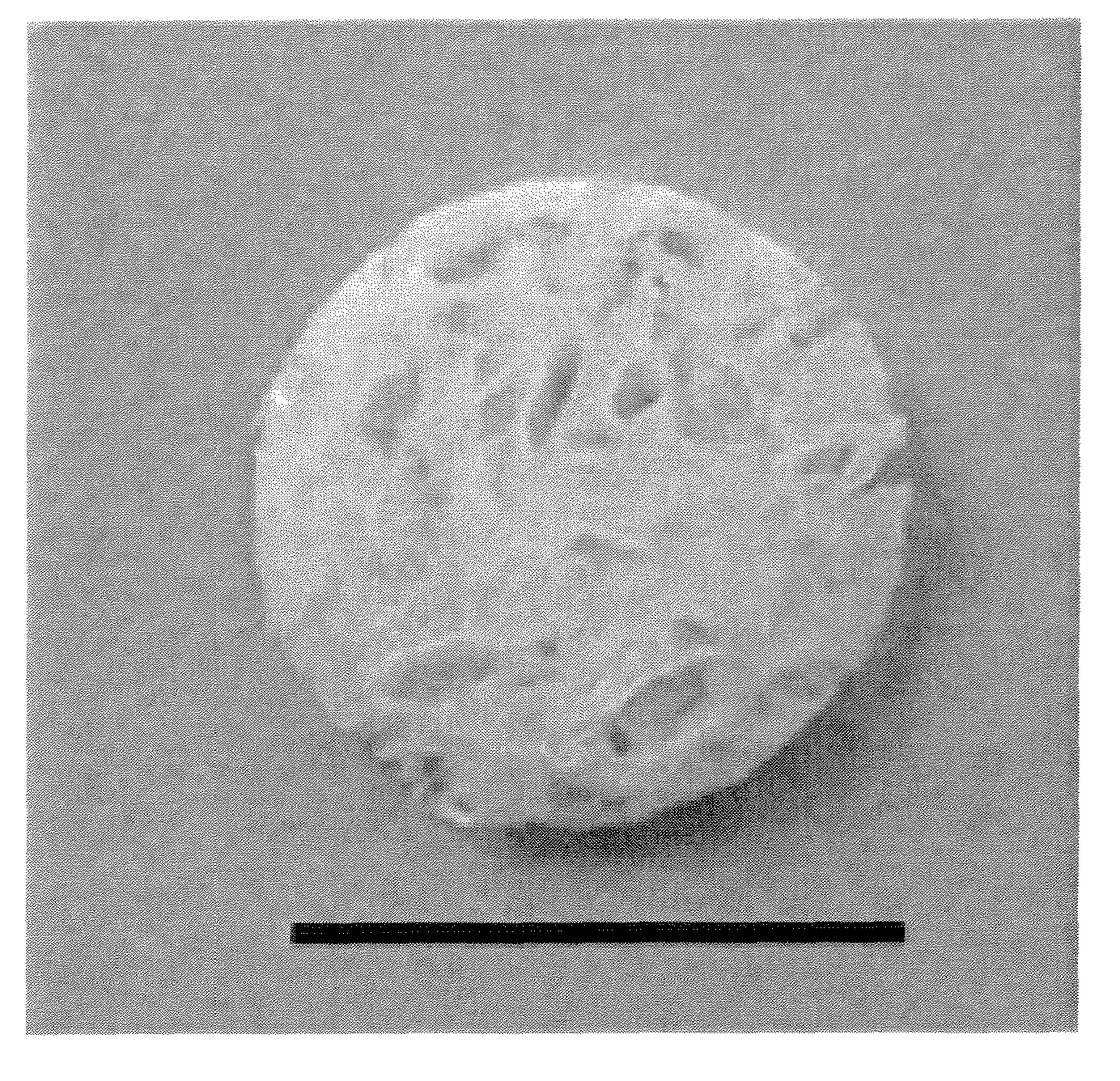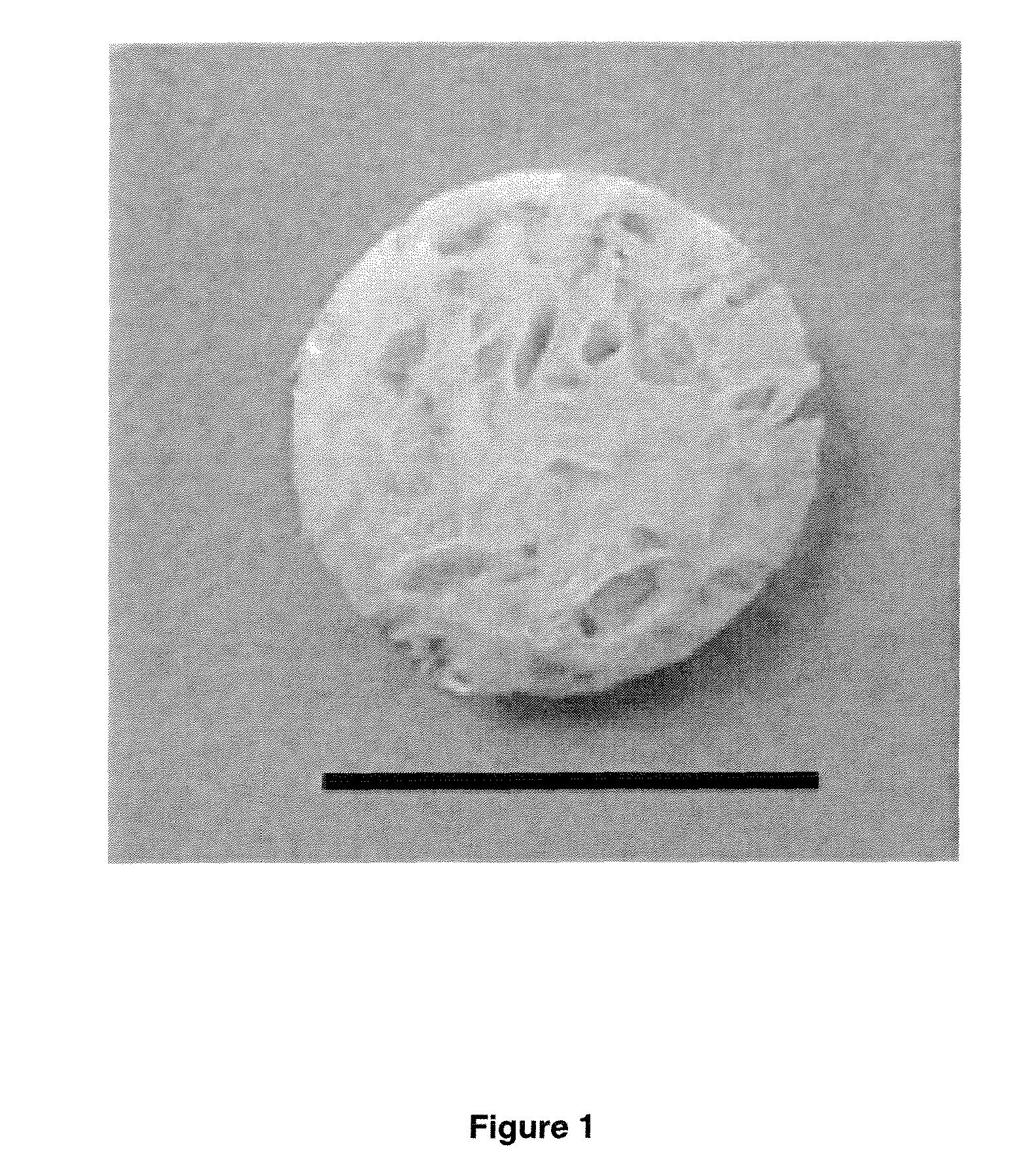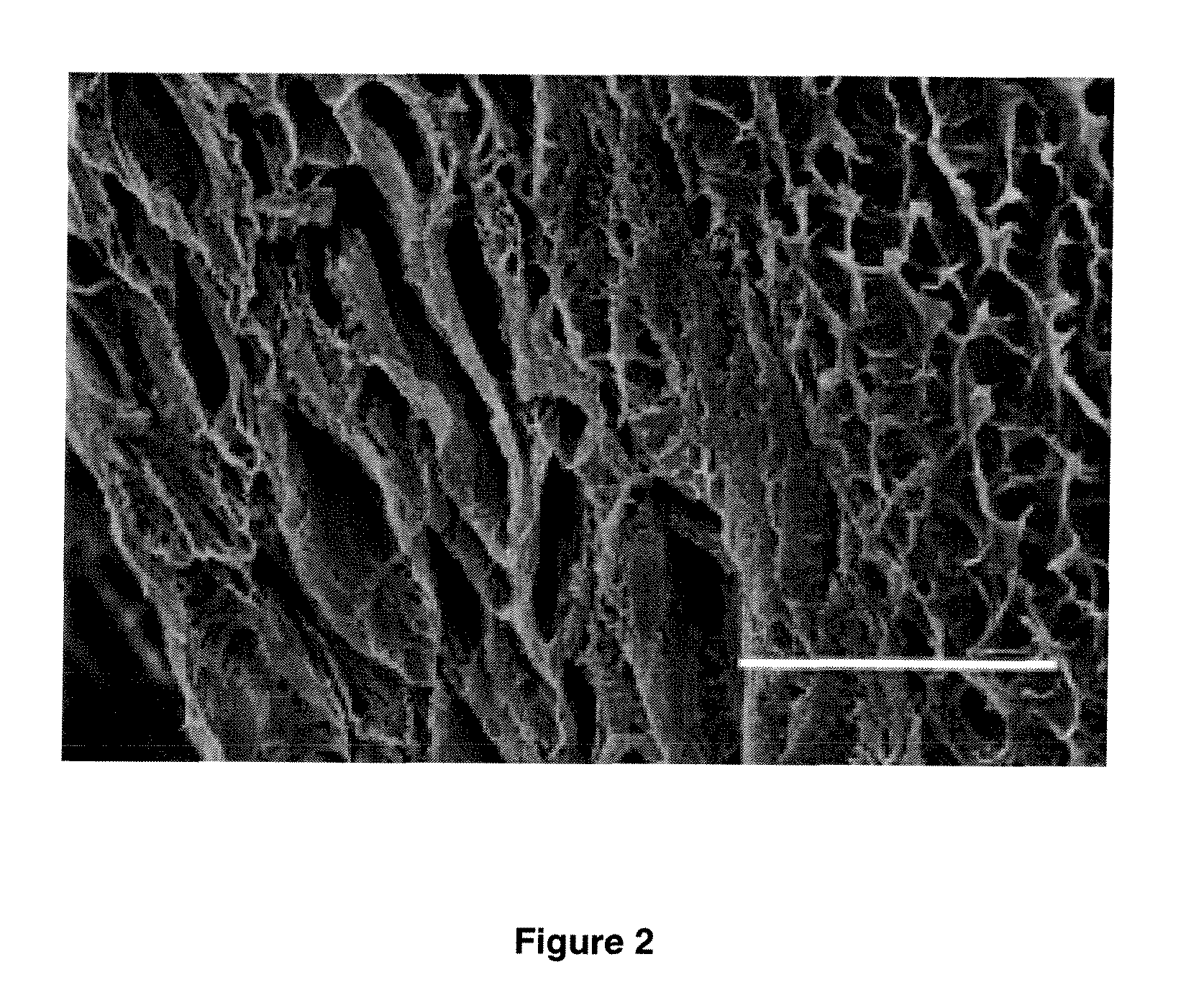Method for Preparing Porous Scaffold for Tissue Engineering, Cell Culture and Cell Delivery
- Summary
- Abstract
- Description
- Claims
- Application Information
AI Technical Summary
Benefits of technology
Problems solved by technology
Method used
Image
Examples
example 1
Polysaccharides-Based Scaffolds Preparation
[0084]Polysaccharide-based scaffolds were prepared using using a mixture of pullulan / dextran 75:25 (pullulan, MW 200,000, Hayashibara Inc., Okayama, Japan; dextran MW 500,000, Pharmacia). A polysaccharide solution was prepared by dissolving 9 gr of pullulan and 3 gr of dextran into 40 mL of distilled water. Sodium carbonate (8 g) was then added to the polysaccharide solution and stirring was maintained until a homogeneous mixture was obtained. Chemical cross-linking of polysaccharide was carried out using the cross-linking agent trisodium trimetaphosphate STMP (Sigma, St Louis) under alkaline condition. Briefly, one millilitre of 10M sodium hydroxide was added to 10 g of the polysaccharide solution, followed by the addition of one millilitre of water containing 300 mg of STMP. The mixture was then poured into petri dishes (Nunclon®, #150288) and incubated at 50° C. for 15 min. Resulting hydrogels were immediately immersed into a large beake...
example 2
Types of Polysaccharides
[0085]Porous scaffolds were prepared as described in example 1, using different types and ratios of polysaccharides, while keeping the total amount of polysaccharide at a constant value. Polysaccharides were either pullulan, dextran 500, fucoidan LMW (Low Molecular Weight) and fucoidan HMW (High Molecular Weight).
DextranFucoidanFucoidanPullulan500LMWHMWSolubilizationViscosity100% ++++++100% + / −+50%50%++++75%25%++++75%25%+ / −+++75%25%++Solubilization (+++ indicates a complete solubilization of the polysaccharides) and viscosity of the resulting polysaccharide solution (+++ indicates a very high viscosity of the solution) were visually assessed. In all cases, porous scaffolds were obtained at the end of the protocol.
example 3
Porogen Amount
[0086]Porous scaffolds were prepared as described in example 1, while varying the amount of the porogen agent. Briefly, 2, 4 or 8 gr of sodium carbonate were added to the pullulan / dextran solution.
Porogen agentSolubilizationViscosityPorosity2 g+++++4 g++++++8 g++++++Solubilization (++ indicates a complete solubilization of the polysaccharides), viscosity of the resulting polysaccharide solution (+++ indicates that a very high viscosity of the solution) and porosity were visually assessed. For scaffolds prepared with the lowest amount of porogen (2 g), the effervescence process was moderate, as compared to the effervescence obtained with 4 g and 8 g of porogen agent. In all cases, porous scaffolds were obtained at the end of the protocol.
PUM
| Property | Measurement | Unit |
|---|---|---|
| Temperature | aaaaa | aaaaa |
| Temperature | aaaaa | aaaaa |
| Size | aaaaa | aaaaa |
Abstract
Description
Claims
Application Information
 Login to View More
Login to View More - R&D
- Intellectual Property
- Life Sciences
- Materials
- Tech Scout
- Unparalleled Data Quality
- Higher Quality Content
- 60% Fewer Hallucinations
Browse by: Latest US Patents, China's latest patents, Technical Efficacy Thesaurus, Application Domain, Technology Topic, Popular Technical Reports.
© 2025 PatSnap. All rights reserved.Legal|Privacy policy|Modern Slavery Act Transparency Statement|Sitemap|About US| Contact US: help@patsnap.com



